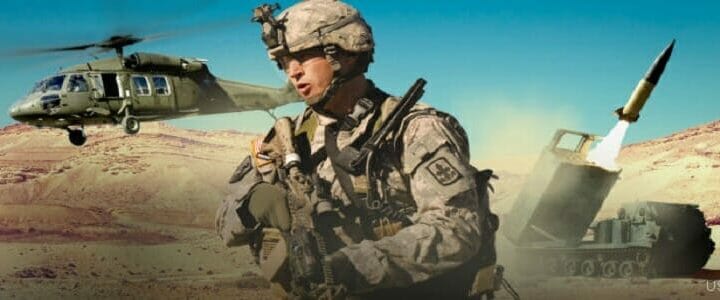There’s been a lot of talk around the potential location of the forthcoming Army Futures Command, the new four-star headquarters that will be tasked with identifying the capabilities necessary to fight future wars, and developing those capabilities. It’s all the civilian world seems to care about. So it’s no wonder that it has gone virtually unnoticed that on June 4, Secretary of the Army Mark T. Esper signed-out Department of the Army General Order No. 2018-10.
The Army won’t wait for the decision on where to locate the headquarters to jumpstart the new organization. Army Futures Command will begin its life on July 1, and is directed to achieve full operating capability within a year. There has been a lot of speculation within the Army on existing organizations beyond the eight cross-functional teams established last October. Those teams, each led by a one-star general, are intended “to embrace horizontal and vertical integration and improve the quality and speed of materiel development activities.”
In other words, they bring together officials from all the competing organizations that currently work to develop new capabilities, so they can cut through the bureaucratic mess and go from idea to product as quickly as possible. With the release of DAGO 2018-10, we now know who will join them.
McMaster’s old haunt
The big loser in the whole affair is the U.S. Army Training and Doctrine Command at Fort Eustis, Va. The four-star headquarters that develops doctrine for how we fight and how we train to fight, trains new soldiers and runs all the Army’s schoolhouses (except the Army War College at Carlisle Barracks, Penn., and the U.S. Army John F. Kennedy Special Warfare Center and School at Fort Bragg, N.C.). It currently handles capabilities gaps and defines the requirements for new capabilities. TRADOC will lose its three components that handle the capabilities mission under the July 1 reorganization.
The first, and to most insiders most obvious transfer, is the Army Capabilities Integration Center, or ARCIC. This organization is relatively new. It was formed in February 2006 to coordinate “how best to integrate warfighting capabilities into the force and among the military services and with other agencies.” Before becoming the national security adviser last year, Lt. Gen. H.R. McMaster served as the ARCIC director.
The Capability Development and Integration Directorates at each of the “Centers of Excellence,” as the schoolhouses are now called, are the organizations that define exactly what a future piece of equipment should be able to do. They, along with their “battle labs” and array of “TRADOC capabilities managers” will move to Futures Command, although it is likely they will stay physically located where they are. After all, there’s not much sense moving the battle lab responsible for testing new infantry and armor ideas to someplace other than where new infantrymen and armored crewmen are taught their jobs.
Lastly, the TRADOC Analysis Center, which conducts operational research and statistical analysis for the Army, will make the move.
Research, Development, and Engineering
In terms of the number of employees, perhaps the largest organization moving to Futures Command is the U.S. Army Research, Development, and Engineering Command, RDECOM (ar-dee-ee-comm) headquartered at Aberdeen Proving Ground, Md. Like ARCIC, RDEOM is a relatively young organization, formed in 2003. A component of the Army Materiel Command, also a four-star headquarters, RDECOM controls the Army Research Laboratory, which conducts basic scientific research to make new discoveries, and the research, development, and engineering centers take ARL’s and other new discoveries and develop them into workable technologies that can improve or add to a system’s capabilities.
At the top, RDECOM is designed to conduct “systems engineering,” to ensure that all the developments at the various RDECS work with the systems they’re supposed to enhance, and work with each other. Maj. Gen. Harold Greene, the highest ranking soldier killed in Afghanistan, was the deputy commanding general at RDECOM before his overseas assignment and a huge proponent of Army systems engineering.
Finally, the Army Materiel Systems Analysis Activity, which was once part of RDECOM, will also fall under AFC’s command. AMSAA provides the analysis necessary to make engineering and acquisition decisions.
Lots of decisions left
Although the AFC will achieve initial operating capability immediately on July 1, since all the organizations already exist, there are a few things still left unsaid. The first of these is “who will run the thing?” Assignment of a four-star general to run the organization will require Senate confirmation, and since the number of four-stars is established by law, the Army will likely also need Congressional action to authorize an extra general. If I had to place a bet, I’d wager that Lt. Gen. Eric J. Wesley, the current ARCIC director, will serve as the acting commanding general until the Army sorts through the last details.
This, to borrow a phrase, is what it looks like to build an aircraft while already in flight. Fasten your seatbelts.




